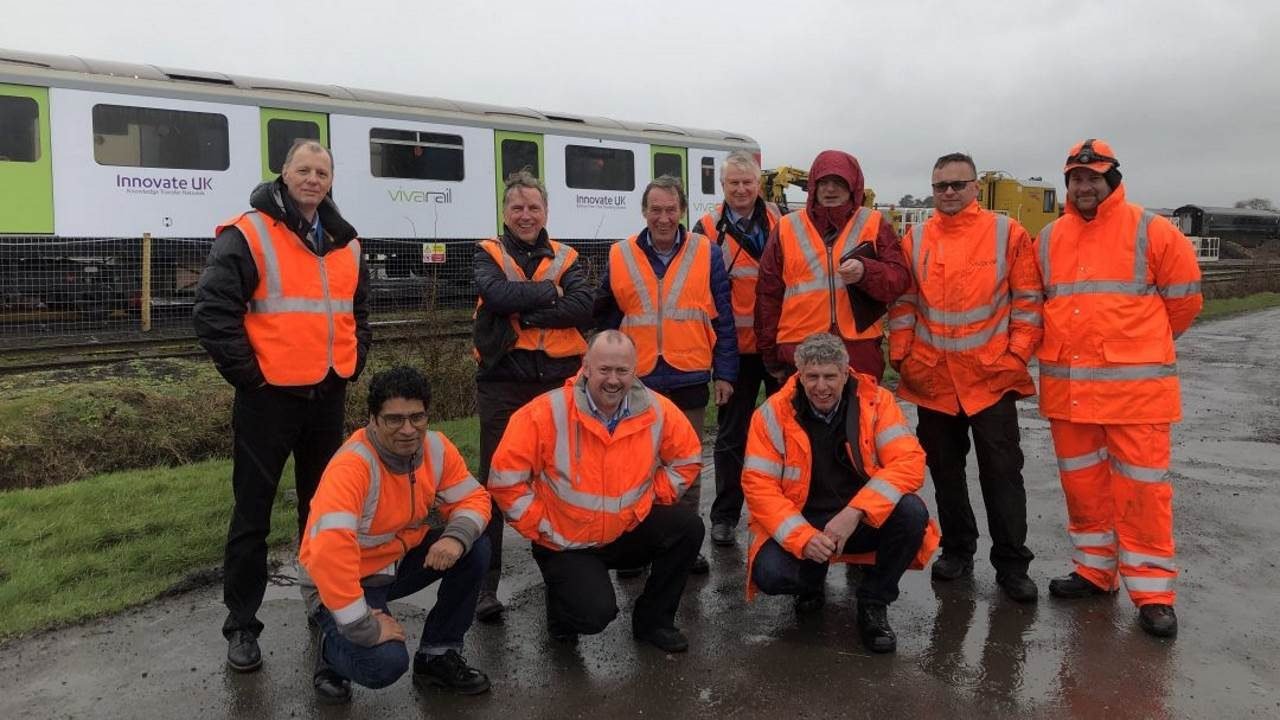Vivarail has announced that it has successfully demonstrated the capabilities of its patented fast charge system to the Department for Transport and InnovateUK.
The demonstration marked the conclusion of a 12 month project supported by a grant from the Accelerating Innovation in Rail 4 competition, funded by the Department for Transport and delivered by InnovateUK to develop new technology.
Vivarail is the only UK company with an operational battery train with a range of 60 or more miles between charges and the accompanying charging system.
Vivarail ran the Class 230 battery train as a passenger train on the Bo’ness & Kinneil Railway with the support of Transport Scotland and Scotrail in October 2018.
The system comprises short sections of 3rd and 4th rail which connect to the train via shoegear. The train pulls to a stop at the terminus and the shoegear connects to the rail to draw the current at an extremely high rate.
Due to the high currents required, the train uses a carbon ceramic shoe able to withstand the heat generated in the process
Charge times can be as little as 7 minutes even for a 60 miles journey for the train to draw enough power to run daily services. The train’s range of over 60 miles between charges gives operators a wide choice of potential lines to run zero emission trains.
What did the officials say?
Adrian Shooter, CEO of Vivarail, said
“Having procured, operated and maintained trains over many years my aim with the Class 230 has always been to build a train that delights passengers and operators. I know how important it is to the public and the industry as a whole to phase out diesel units and our battery train is paving the way for that to take place today not tomorrow. This train can be easily brought into service saving huge amounts of spend on electrification and infrastructure.
“I was delighted that InnovateUK awarded us this grant last year and I am extremely proud of my team, led by Pete Mason and Paul Soor, who brought this brand new system to fruition in such a short space of time.”
Kelvin Davies, Innovation Lead for Rail at InnovateUK said
“We know that travelling or moving goods by train is more sustainable for the environment. Yet the challenge remains to encourage new technology and new thinking to make it ever more environmentally-friendly. What the Vivarail project team have achieved is extremely encouraging in supporting the delivery of battery-powered rolling stock in the UK. Exploring the opportunity offered by this technology is crucial in delivering the Department for Transport’s future national rail strategy, supported by Innovate UK. As we move away from diesel traction the expertise developed in this project will promote the UK as being at the forefront of this exciting growth area.”
Where Next?
News Homepage
For the Latest Railway News
RailAdvent Online Shop
Framed Prints, DVD’s / Blu-Ray’s and more
LocoStop Community
Come and share your railway pictures
Vivarail
Visit their website






Responses
Vivarail Class 230 BEMU could be ideal to work on shorter branch lines. Such as branch lines in Cornwall, Devon, South Wales, North Wales, West Midlands (Including Stourbridge Junction-Stourbridge Town shuttle), East Midlands. Marshlink Line in East Sussex (Hastings-Ashford International). West Ealing-Greenford in West London (if TfL were to take over and London Overground to operate the Greenford branch line service and with using the Class 230 DEMU or BEMU. And branch lines in the Thames Valley area to replace the Class 165s. And on other local services in the North of England. Which is why Vivarail are converting the former London Underground D78 Stock and re-classified them as Class 230 DEMU and BEMU units.